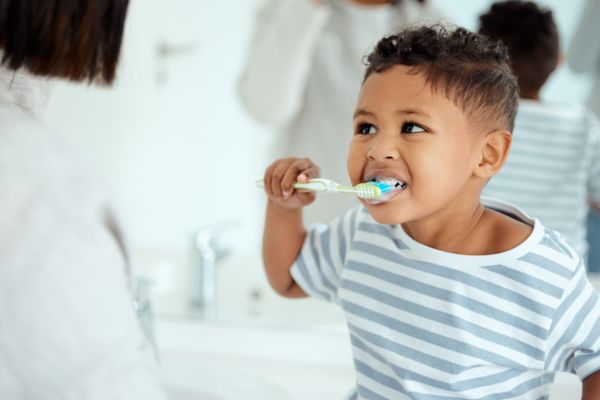
Many experienced caregivers are very familiar with the need to establish routines with children. From the time that children wake up until they lay their little heads on their pillows at night, the day is full of routines. Indeed, children need routines to feel safe and secure, as it helps them to know what comes next in their day. Enjoying meals together, getting dressed, playing outside, resting, napping, reading together, going on a walk, playing with our favorite toys, playing with siblings or friends, taking a bath, brushing our teeth, cleaning up, going to bed—wow, our days are full of routines!
Some routines are more challenging than others, as children develop and learn the concrete reason for required routines. For example, while putting on our shoes to play outside has a concrete outcome (play!), brushing our teeth to go to sleep might not quite be so obvious. For young children, it might take a while to understand the reasoning behind these important routines that keep us safe, healthy, well-rested, and grounded.
Following routines is tied to social-emotional skills, language, and the cognitive ability to understand the reason why we might have to do something. In addition to sticking to a healthy routine most days, there are also lots of things that caregivers can do to help children build the other skills that help them to understand routines. For example, one of the most tried and true methods is to sing through routines—music makes everything more fun, but the lyrics of songs can also help children to remember the steps of a routine.
Also, we can help children to build to build language and cognitive understanding of routines by “practicing” on dolls, toys, and with sensory materials. For example, let’s unpack a routine that we do multiple times a day with children of all ages that can be a challenge in many ways—hand washing! When working with infants, caregivers can engage in self-talk and songs while going through routines with children. For example, caregivers can build language by saying “I am going to wash your hands, let’s get the water, and soap, and let’s scrub our hands, and now let’s rinse them! Oh, and now we get a nice towel and pat them dry. Can you pat your hands?”. With toddlers, they might understand they need to wash their hands, but then they might also want to stay in the bathroom and play with bubbles. Of course they do, because bubbles are fun! In that case, we can give them more opportunities to play with bubbles outside of the bathroom, so that they have a healthy outlet for these sensory needs.
For preschool aged children, we can take things a bit further and really understand the science of why we have to wash our hands. What are germs? Can we see them? We can engage in experiments where we play with toys rolled in flour and see what happens when we touch black construction paper afterward. Not only is it fun to play with something sensory like flour, but then we can help children to visually and kinesthetically connect to the concept that germs can spread, even when we don’t see them!
Through play, we can turn the abstract into concrete, meet children’s needs, and help them to learn the important language that helps us throughout the day.

For more activities that help a child learn about routines, visit rayzkidz.com/category/activities